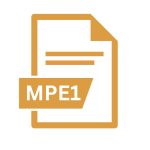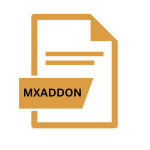.OSAX File Extension

AppleScript Scripting Addition
| Developer | Apple |
| Popularity | |
| Category | Plugin Files |
| Format | .OSAX |
| Cross Platform | Update Soon |
What is an OSAX file?
The .OSAX file extension stands for “AppleScript Scripting Addition,” denoting a specialized file type utilized by the AppleScript scripting language.
These files serve as modular additions to AppleScript, augmenting its functionality by providing additional commands and capabilities to automate tasks on macOS systems.
More Information.
.OSAX files were conceived alongside AppleScript to augment its capabilities. Initially, they aimed to extend automation functionalities on Macintosh systems. Introduced as modular additions, they enabled users to automate tasks beyond the scope of standard scripting.
Since their inception, .OSAX files have been integral to the evolution of AppleScript, empowering users to streamline workflows and interact with system components more efficiently.
Origin Of This File.
The concept of scripting additions dates back to the early days of the Macintosh platform, where developers sought ways to enhance the capabilities of AppleScript.
The .OSAX file extension emerged as a means to encapsulate and distribute these additional functionalities in a modular fashion.
Introduced alongside the AppleScript scripting language, .OSAX files have been instrumental in expanding the horizons of automation on macOS systems.
They empower users to automate repetitive tasks, interact with system components, and extend the capabilities of various applications through scripting.
File Structure Technical Specification.
.OSAX files typically consist of compiled code written in AppleScript, though they can also contain components written in other languages such as Objective-C or Apple’s own Cocoa framework.
The structure of .OSAX files adhere to specific conventions defined by AppleScript, ensuring compatibility and interoperability with the scripting environment.
Technically, .OSAX files are bundles, meaning they are directory-like structures that appear as single files to the user.
Within these bundles, various resources such as scripts, libraries, and metadata are organized to facilitate their integration into the AppleScript ecosystem.
How to Convert the File?
Converting .OSAX files aren’t a standard procedure, as they are specifically designed for use within the AppleScript environment on macOS systems.
If you need to transition functionality provided by .OSAX files to other platforms or formats, you’ll likely need to rewrite or reimplement the code using alternative scripting languages or frameworks. Here’s a general approach you can take to convert .OSAX files:
- Understand Functionality: Begin by thoroughly understanding the functionality provided by the .OSAX file you intend to convert. Analyze the scripts, commands, and capabilities it offers to ensure a comprehensive understanding of its purpose.
- Choose Alternative Platform/Language: Identify the platform or scripting language you intend to migrate the functionality to. Consider factors such as cross-platform compatibility, available libraries, and familiarity with the chosen language or framework.
- Rewrite Code: Using the functionality provided by the .OSAX file as a reference, rewrite the code in the chosen scripting language or framework. This may involve adapting syntax, replacing AppleScript-specific commands with equivalent functions, or leveraging platform-specific APIs.
- Test and Debug: Thoroughly test the converted code to ensure it behaves as expected and produces the desired outcomes. Debug any issues or errors that arise during testing, addressing discrepancies between the original .OSAX functionality and the converted implementation.
- Optimize and Refactor: Once the converted code is functional, consider optimizing and refactoring it to improve performance, readability, and maintainability. Eliminate redundant code, optimize resource usage, and adhere to best practices of the chosen scripting language or framework.
- Documentation and Integration: Document the converted code to provide insights into its functionality, usage, and any dependencies it may have. Integrate the converted functionality into your workflow or application, ensuring seamless interoperability with other components.
- Version Control: Utilize version control systems such as Git to manage changes to the converted codebase effectively. This allows for collaboration, tracking of modifications, and easy rollback in case of unforeseen issues.
- Feedback and Iteration: Solicit feedback from stakeholders or peers on the converted functionality, incorporating any suggestions or improvements identified during the review process. Iterate on the code as necessary to address concerns and enhance its overall quality.
Advantages And Disadvantages.
Advantage:
- Enhanced Functionality: .OSAX files empower users to extend the capabilities of AppleScript, enabling them to automate a wide range of tasks efficiently.
- Modular Design: The modular nature of .OSAX files allow for easy distribution and integration of additional functionalities into the AppleScript environment.
- Community Contributions: The availability of .OSAX files created by developers and enthusiasts fosters a vibrant ecosystem of automation solutions, offering users a plethora of options to enhance their workflows.
Disadvantage:
- Dependency Management: In complex scripting environments, managing dependencies between different .OSAX files can become challenging, potentially leading to compatibility issues or version conflicts.
- Limited Platform Support: .OSAX files are primarily designed for macOS and may not be directly compatible with other operating systems, limiting their utility in cross-platform automation scenarios.
- Security Concerns: As with any scripting environment, utilizing .OSAX files sourced from untrusted or unverified origins may pose security risks, potentially exposing systems to malicious code or exploits.
How to Open OSAX?
Open In Windows
Rewrite the .OSAX functionality in PowerShell or explore third-party tools like Python or AutoHotkey for automation tasks on Windows systems.
Open In Linux
Recreate the .OSAX functionality using Bash scripts or scripting languages like Python or Perl for automation tasks on Linux systems.
Open In MAC
.OSAX files are directly integrated into the AppleScript environment for automation tasks on macOS systems.
Open In Android
Develop Android applications using Java/Kotlin or explore automation apps like Tasker for similar automation tasks as .OSAX files.
Open In IOS
Develop iOS apps using Swift/Objective-C or utilize the Shortcuts app for automation tasks similar to .OSAX files.
Open in Others
Explore JavaScript for web-based automation or cross-platform automation tools like Node.js or Electron for automation tasks in other environments.













